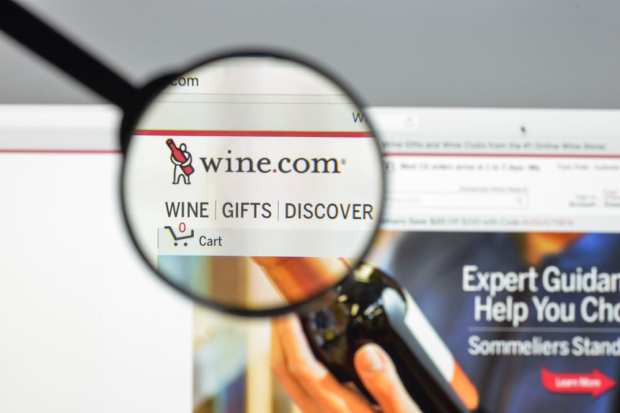Wine For The Win: Consumers Stock Up With Online Retail

Consumers may not have returned to their pre-crisis shopping behaviors, but they are setting records for drinking wine. Every online wine company that reports sales has noted big spikes during the pandemic. The latest to report, Wine.com – which bills itself as the nation’s leading online wine retailer – earned $165 million in revenue and saw 25 percent growth for fiscal 2020, ending March 31. The $33 million revenue increase over fiscal 2019 is the biggest in the company’s 15-year history.
The results reflect only two weeks of shelter-in-place orders. However, April revenues exceeded $40 million, a 350 percent increase over April 2019. This took what the company calls “trailing” 12-month revenue to $197 million – a 47 percent increase over 2019.
According to Rich Bergsund, Wine.com CEO, the company has hired more than 500 people for its operations, customer service and live chat recommendations teams, while moving others to same-day shipping and a seven-day-a-week business cycle.
The company had been focusing on its subscription model, which paid off. Revenue from its StewardShip club members – the company’s most loyal and profitable customer segment, with a value-to-acquisition cost ratio of 10-15 times – reached $100 million, an increase of 54 percent.
Meanwhile, revenue from mobile devices increased by 55 percent to $65 million. Revenue from millennials and younger age groups topped $50 million, an increase of 77 percent. Customer satisfaction scores, tabulated by Bizrate, reached an all-time high of 9.4 out of 10 on “likelihood to recommend.”
The question now, said Bergsund, what will things look like when things return to “normal?”
“The awareness gap for wine eCommerce is closing as consumers go online for their daily needs,” he said. “We, and our customers, expect this to have lasting effects.”
In April, Wine.com surveyed over a thousand new customers and asked them about their past, current and expected online shopping behavior. They found that only 24 percent regularly shopped for wine online prior to the pandemic. Today, that number is 86 percent, and 88 percent expect to continue going forward.
“How exactly that will play out remains to be seen, but we believe the bar for the consumer’s wine shopping experience has risen, with new expectations for a large selection, deep content and value-added experiences,” noted Bergsund.
With sales of $3.2 billion, direct-to-consumer (DTC) shipping represented 10.8 percent of all retail wine sales for 2019, according to Sovos ShipCompliant and Wines Vines Analytics. Other wine eCommerce companies have reported similar success. For example, Naked Wines says it hired for 80 new positions, including customer service, data technology and marketing roles, in April 2020.
Winc, one of the newer eCommerce sites that sells proprietary wine brands, saw a 798 percent increase in new member sign-ups between March 15 and April 4, compared to February and March. In March, Winc had 42,266 new members and an 80 percent increase in revenue from February. When April numbers come in, Winc expects to have added 57,500 new members and to see about 55 percent month-over-month growth.
Apparently, consumers began the pandemic lockdown with some panic buying. The in-store purchase of alcoholic beverages has been more consistent since the big stock-up early in the pandemic (the weeks of March 14 and March 21), according to Danny Brager, senior vice president of beverage alcohol for Nielsen. He also pointed out that consumers are spending more per bottle.
“Perhaps we’ll see that slow or reverse in the months ahead, but we also recognize that consumers are transferring money they might have spent on alcohol in a restaurant, bar or tasting room to something they are buying at lower mark-ups from stores or online, or from those on-premise establishments that are offering alcohol to go at much-reduced prices than ‘normal,’” Brager said, as quoted in The North Bay Business Journal.